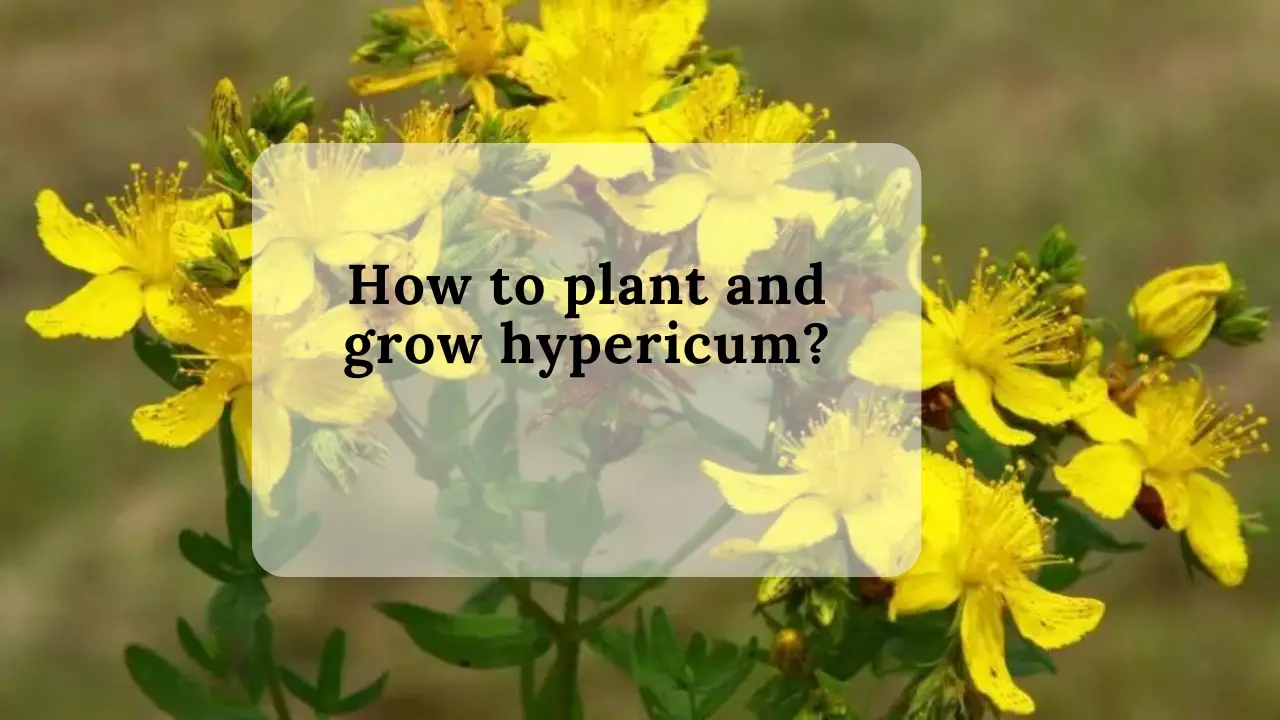Tips and tricks for making St. John’s wort bloom
A hardy and resistant plant with pretty yellow flowers, hypericum works wonders in gardens… but not only that! Find out how to successfully plant and grow this colorful plant.
How to plant and grow hypericum?
The characteristics of hypericum
- Type : ornamental plant
- Height : 0 to 30 cm, 30 to 60 cm, 60 to 80 cm, 80 cm to 1 m, 1 to 2 m, 2 to 5 m
- Flower color : yellow
- Desired exposure : sunny, semi-shaded
- Soil type : well-drained, poor, stony, rocky
- Foliage : evergreen, semi-evergreen, deciduous
- Vegetation : perennial or annual
- Sanitizer : yes
- Varieties : Hypericum lanceolatum, hypericum perforatum, hypericum calycinum, Hypericum reptans, Hypericum ‘Hidcote’
Origins and particularities of hypericum
Hypericum is the Latin name for a plant generally known as St. John’s wort . It is a herbaceous plant which, depending on the species, can be perennial or annual, and which has been cultivated for several centuries already!
To date, there are around 400 varieties of hypericum , some in plant form, some in shrub form, such as hypericum lanceolatum. The best-known species of St. John’s Wort is undoubtedly Hypericum perforatum, which is so called because through transparency, the petals of the flower appear perforated, even if this is not the case. This plant appears as a ground cover plant or shrub with yellow flowers composed of 5 petals and numerous yellow stamens.
Among the other famous varieties of St. John’s wort , there is also hypericum lanceolatum, hypericum calycinum, or even hypericum Hidcote. St. John’s wort is an ornamental that can be planted in the ground (for example in a rockery, a flower bed, a border or as a ground cover) as well as in a container or pot to decorate a balcony or terrace.
Hypericum varieties
The genus hypericum has around 400 species which are distinguished by their leaves and fruits which display varied shades.
Hypericum patulum ‘Hidcote’: this hypericum takes the form of a small round shrub, rich in flowers, which can measure up to 1.50 m.
Hypericum calycinum: also known as large-flowered St. John’s wort or ground cover St. John’s wort, this variety reaches a height of 40 cm. Its large flowers take on a golden color.
Hypericum x moserianum ‘Tricolor’: as its name suggests, this variety of St. John’s wort has foliage that even green, pink and cream.
Hypericum x inodorum : this St. John’s wort is a shrub with aromatic foliage which measures up to 1 meter high, and which offers abundant flowering.
Hypericum olympicum: also called St. John’s wort, this hypericum is covered with small light yellow flowers.
Uses and virtues of hypericum
Hypericum perforatum is a plant widely used in homeopathy , under the name St. John’s wort (which means a thousand holes), and can treat mild depression, anxiety and even mood disorders. St. John’s Wort has been used to treat these disorders for nearly 2,400 years, so it has largely proven itself in this area!
The flowers of hypericum perforatum were also macerated in olive oil and left in a bottle in the sun for 3 weeks. This oil, which turned red, had recognized anti-inflammatory, healing and analgesic properties.
Today, in herbal medicine, hypericum is sold in the form of red oil, extracts, capsules or even tincture .
Be careful, however : the plant can have harmful side effects or interact poorly with other medications. Always seek the advice of a health professional before consuming it!
Planting hypericum
It is advisable to start planting hypericum in spring or fall . This perennial plant should be planted in the sun or in a semi-shaded location and in loose, deep and well-drained soil .
Hypericum is generally planted in beds, but also on borders, in planters or even on embankments . Hypericum flowering begins in June and lasts until September: pretty yellow flowers then appear. They can be accompanied in a massif by hostas or even agapanthus.
Hypericum care
Hypericum is a plant that does not require any particular maintenance , but as it tends to become invasive, you can easily prune it to prevent its excessively invasive expansion.
In terms of watering: always keep the substrate of plants grown in pots fairly cool , and only water plants planted in the ground in the event of prolonged drought.
Hypericum size
If your hypericum is shrubby , you will then need to prune it at the beginning of spring , when the plant does not yet have buds.
Hypericum can only be pruned every 2 to 3 years .
Hypericum Diseases and Pests
St. John’s wort is a hardy and resistant plant that is not very prone to disease. However, if you water it too much and humidity sets in, the hypericum may be affected by rust . If this is the case, a treatment based on horsetail manure will help treat the plant.
Hypericum multiplication
Hypericum can be propagated by cuttings or by dividing tufts .
Propagation of hypericum by cuttings : Wait until summer to take cuttings from your plant. Then transplant them into the ground.
Propagation of hypericum by division of tufts : Remove the plant carefully from the ground. Cut the clump using a spade then transplant the two new plants thus obtained without delay.

